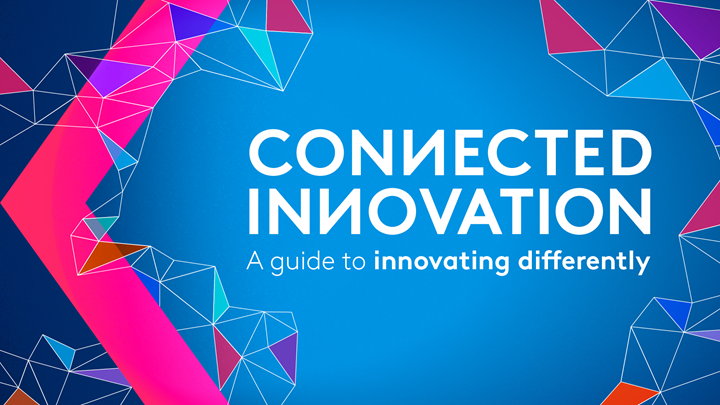In our series of innovation articles, we’ve explored best practices that will help companies bring a new product or service to market successfully. However, innovation is the lifeblood of any company, and cannot be treated as a one-off. So how can you futureproof your innovation strategy to drive long-term brand growth?
Drawing on interviews with seasoned innovation practitioners and our experience working with some of the most innovative companies in the world, here are some tips to help you create a successful innovation strategy that will help you win today, tomorrow and beyond.
Balance your pipeline across core, stretch and breakthrough innovation
An effective innovation strategy must achieve three objectives:
1. The first is to ensure a stable income stream generated by a company’s core brands, helping them adapt to changing consumer needs and fend off competitive initiatives.
2. The second is to leverage the strength of existing brands and use innovation to expand the core brands.
3. The third is to seek big, new opportunities that will add a significant new income stream and ensure the company’s future.
For most companies, a well-balanced innovation pipeline would mean investing 70-20-10 across these three areas, sometimes referred to as core, stretch and breakthrough. However, as we saw in the pandemic, difficult times have pushed companies to prioritise short-term survival. The innovation balance shifted closer to 90-10-0, jeopardising a business’s ability to find the next big thing.
Shafik Saba, Global Lead of Front-End Innovation, at Haleon, suggests that a sustainable innovation programme must have a rhythm or a cadence that protects the core business, while extending to new areas. Setting clearly defined goals and timelines for each of the three can help safeguard your company’s innovation pipeline.
“Sustainable innovation models have a rhythm[…]a cadence to them such that there's a time when you're protecting your current business and there's a time when you're extending your current business, and when extensions are emblematic of your brand purpose it will halo back to the core through sustainable investment, something Sensodyne has been able to do successfully over many years resulting in double digit growth.”
Always-on consumer insights
In today’s volatile and uncertain world, the biggest challenge facing innovators is to ensure that whatever changes arise, they can still deliver the products that consumers want to buy. Whether it is filling in white space or building out a blind spot, innovators must track cultural trends, shifts in consumer sentiment and emerging needs to ensure their new products are fit for purpose.
Kim Mauller, Director of Marketing Insights - Innovation and Foresight, at Molson Coors Beverage Company, states,
“At the end of the day innovation should be all about the consumer - what’s happening in their world, in the broader culture, what their specific needs and behaviors are and how they evolve. It’s about understanding their challenges and problems and solving for them. And when you’re ready to provide that solution, it needs to have a clear point-of-difference in the marketplace.”
Both Mauller and Saba recognised the importance of systematically monitoring consumer attitudes to identify the trends and shifts in sentiment that might signal new opportunities for innovation. However, successful innovation requires more than just monitoring. It requires a combination of trend tracking and more agile, focused research.
For instance, Kantar’s Global Monitor identified a growing desire for mental wellbeing over several years, but in 2021 in the US, we observed a 20% decline in the proportion of people agreeing that they felt energised and enthusiastic about their future. A shift like that should trigger further investigation, examining trends in purchase behaviour, search and social trends, or conducting digital ethnography to understand the underlying causes and implications for your innovation agenda.
Identify the relevant forces of change
Anticipating change is a core innovation skill. Speaking to that topic, Kim Mauller says,
“Foresight can't predict the future, but it can prepare for it. So, you need to scenario plan. You need to understand the big cultural shifts and movements. For example, take a look at what’s happening on social media right now. Will Twitter continue to be a force on social media? Or will consumers flock to other platforms, whether they are existing or totally new to the world. We need to prepare and plan for all of the possibilities.”
To do so, however, the challenge is to separate the trend from the fad. Mauller believes that continuous monitoring helps identify when a trend is beginning to gain traction. She cites the example of non-alcoholic beverages. It is not a big market now, but as a growing number of people are intentionally taking breaks from drinking, it is a good time to make sure that the company has products that appeal to all sets of consumers, so as trends continues to evolve and gather mass appeal, the company may be well positioned to capitalise on them.
Align your innovation strategy with the brand
With strong, meaningfully different brands like Advil, Sensodyne, and Theraflu to work with, Shafik Saba believes it is critical that innovation is aligned with a brand’s strategy, whether it is innovating for stability or brand stretch. He states,
“If your brand strategy is clear about where the growth is going to come from, your innovation will be more sustainable and [make] solving the need more straightforward.”
Saba also notes the importance of setting clear boundaries based on the brand’s equity and position in the marketplace, to guide innovation strategy.
A great example of how an established brand with a strong brand strategy is able to stretch successfully is Kinder, the children’s chocolate brand owned by Ferrero of Italy. Summed up in the phrase, ‘Invented for kids, approved by mums,’ Kinder has focused innovation and communication on its ability to please both kid’s taste buds and imagination - promoting child development and play.
Kinder’s innovations include new line extensions, like Kinder Bueno mini bags, launched to compete in the sharing space, the Storymakers app, which allows kids to create a personalised storybook using the toy they receive in a Kinder egg, and Kinder+Sport, designed to engage kids with physical activities. As a result, Kinder is perceived as creative, with a clear sense of purpose, helping them to grow brand value by over 10% in the latest Kantar BrandZ report.
Build your innovation capabilities
Repetition is an inherent part of any successful innovation strategy. For your innovation programme to be fit for purpose, it needs to be a repeatable process. A successful innovation strategy is as much about how you do things as what to do. Our conversations with innovators highlight five important actions.
1. Set appropriate goals for your innovation
Mauller acknowledges that foresight doesn’t always have immediate payback. She says it’s about futureproofing your business for growth and if you can get your organisation to acknowledge the long-term impact and dedicate the time and the resources to doing that right, you’ll be ahead of the curve.
2. Develop a tight brief
Quoting David Ogilvy, Saba applauds the value of a tight brief. Constraints inspire creativity, and when the brief is clear, it focuses attention on the key trends that will either inspire or undermine an innovation project.
3. Create a culture of innovation
Both Mauller and Saba note that innovation is a team effort between R&D and marketing. No longer is it a case that R&D leads the way and then hands off to marketing. Instead, the two work together to overlap unmet consumer needs with technical possibilities. Inspiration can come from either one, but both need to be integral to development from the start.
4. Be brave
We have highlighted the importance of bravery and it is a quality that came up again in our recent conversations. Mauller puts it this way,
“You must have folks that are willing to take calculated risks. You have to take some leaps and be unafraid of failure. You have to be OK putting yourself out there - but in an informed and educated way. You need to create that design thinking mentality. Iteration is your friend. It's rare you're going to crack an idea on the first round. Keep iterating, learning and evolving and eventually you'll land the idea.”
5. Love the work
To be successful in innovation, practitioners must love what they are working on. Mauller advises,
“We ask ourselves and our team before we launch anything, ‘Do we love it?’ [Because] if you love it, if you have heart for it, if you're fighting for it, there's a better chance that lots of other people are going love it too.”
At Kantar, we are passionate about innovation and have the pleasure to work with some of the best innovators worldwide. We constantly evolve our own innovation offer to better meet the changing needs of our clients – with everything from agile solutions for timely feedback, to AI solutions for an always-on stream of insight, to strategic consultants to help at every stage of the innovation journey.
Get in touch to speak to a Kantar innovation expert and find out more.



